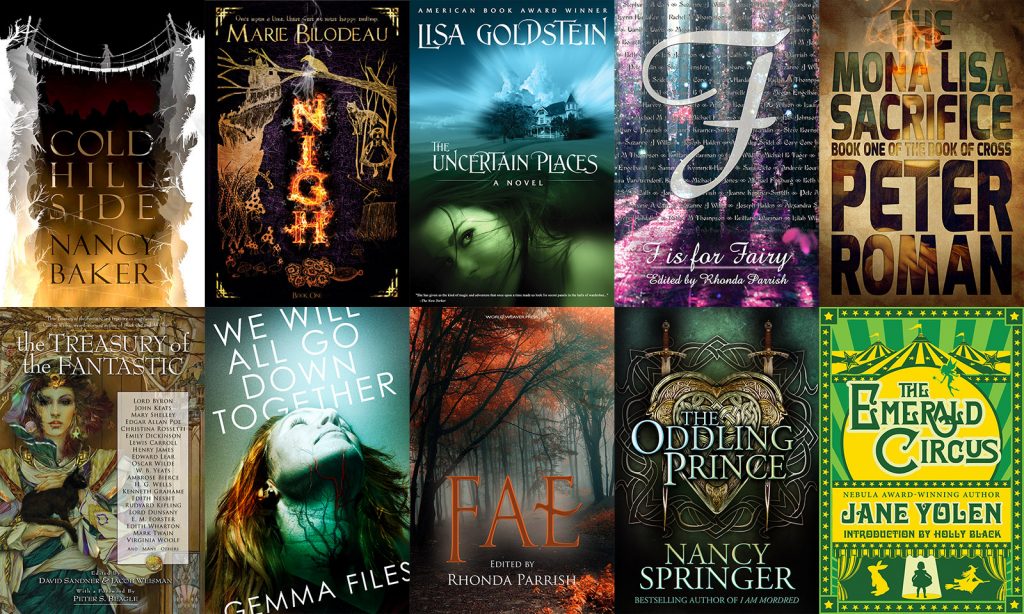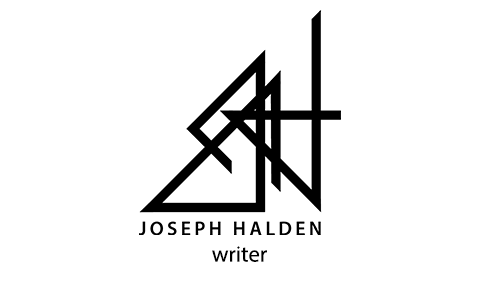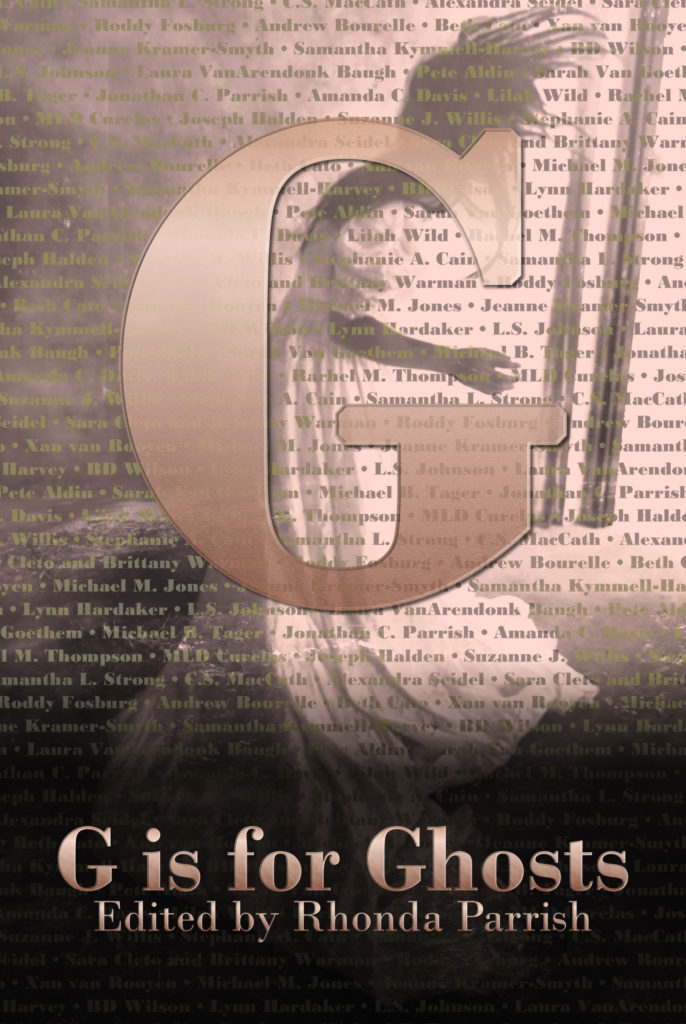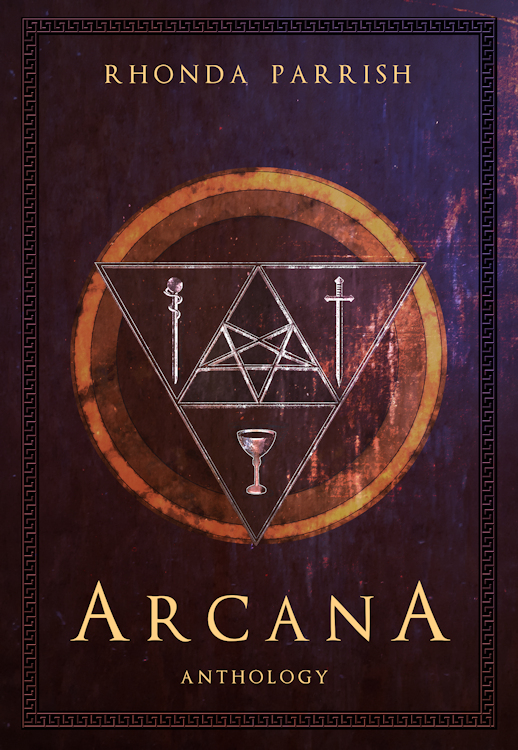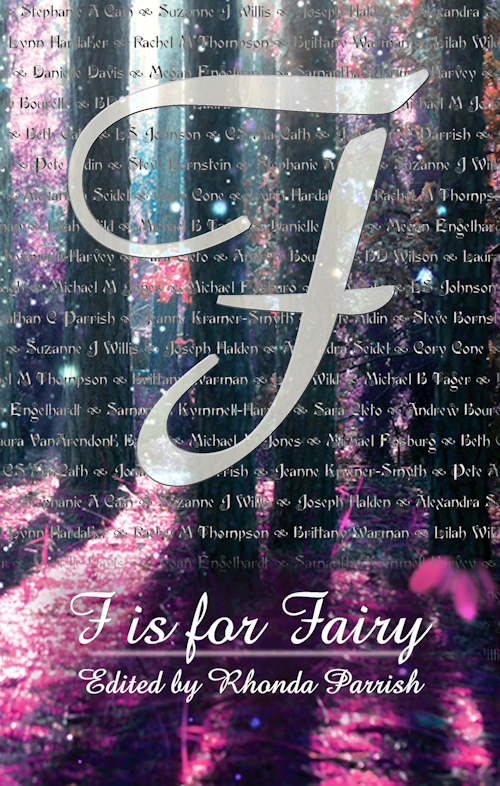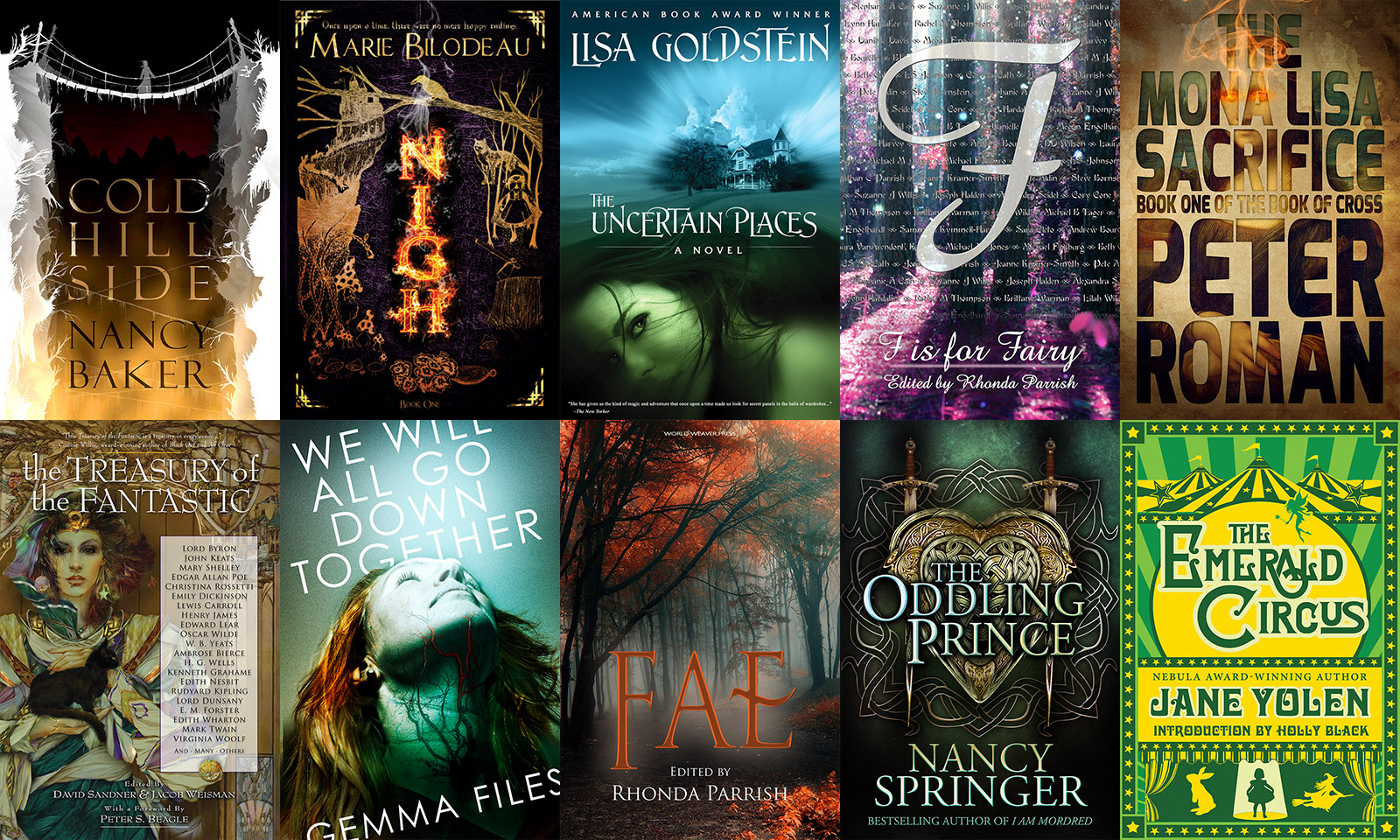About
A wizard in search of magic, an astronaut in need of space, and a hopeless enthusiast of frivolity. I’ve shot things with giant lasers, worn an astronaut costume to try and get into space, and made my own soap. A graduate of the Odyssey Writing Workshop, I write SF&F in Edmonton, Alberta.
I’m overdue for some news sharing, and it’s fairly exciting.
First of all, I’m thrilled to share that a novel I co-authored with Mark R.A. Shegelski, Quantum Worlds and the Entangled Man, is now available on Amazon! This project has been a long time in the making, and it’s a real pleasure to see it make its way out in the world.
Secondly, this past summer I worked with Story City for their Edmonton launch, with my cyberpunk puzzle-adventure story A Hole in the Netaverse. It’s now available on their app to enjoy — best on-site in Edmonton, but there’s also an option to disable location restrictions to enjoy it anywhere. This project was a particular joy because it united my love of storytelling with my love of puzzles and escape rooms. I hope it scratches both itches for everyone who tries it.
A lot of work goes into every project, and if you’ve tried either/both of the above — first of all, thank you! Secondly, please consider leaving a review (on Amazon, Goodreads, or Story City). It’s one of the best ways to support authors outside of purchasing their works.
I’m excited to announce the upcoming publication of a novel I co-authored with Mark R.A. Shegelski: Quantum Worlds and the Entangled Man.
It is available for pre-order now through Amazon, and will be released in print and e-book later this month! Check out the link for more information.

The Fringe Festival is one of my absolute favourite things to do in Edmonton, and I was delighted to be able to experience it this year for the first time in an age. Between the food trucks, street performers and cornucopia of shows on offer, it’s a delight I’ll always treasure. This year was particularly marked because of its long absence due to the pandemic, my own absence from participating in public events, and the fact that I’d just gotten over Covid and was aching to emerge from isolation. I was therefore able to go to shows without the fear that I was putting myself in harm’s way — a luxury I know won’t last, but I’ll drink in as much as possible.
Planet B: Stories From Beyond the Stars
Our first show of the year, Planet B was a sci-fi improv put on by Grindstone Theatre. I hadn’t seen improv in approximately two decades by pandemic years, and it was great to be fully back in the uncomfortable awkwardness that improv can often entail. I’ve only dipped my toe into improv a tiny bit, enough to know how challenging it is. This performance suffered a bit from one or two performers not fully running with ideas their colleagues were putting forth, and so the story stalled a bit. Self-referential awareness on the part of some of the actors saved the show for me, keeping sufficient heart and giving enough of a wink to the audience that it was enjoyable. Improv is challenging, and the cast made do with what they could into a satisfying performance.
Away, Now – The World’s Most Desired Destination
Paul Strickland and Erika MacDonald shone in what was probably my most anticipated play of the Fringe. Having absolutely loved his punny-yet-heartfelt Ain’t True and Uncle False and Papa Squat of several years ago, I longed to be brought back into his whimsical-yet-purposeful and sincere worlds. Away, Now delivered on that front but was of a slightly different beast, being a travel guide and therefore constructed as a variety show and framed in a much more playful manner. While it didn’t quite strike me as deeply as Ain’t True and Papa Squat, I still loved the performance, ideas and play. The take-home message of recovering and empathizing after pain was sorely needed and greatly appreciated after the pandemic.
Plays by Bots
Rapidfire Theatre decided to feed an AI and let it come up with the starts of several plays. The actors were then given the AI-generated scripts and costumes at the start of the show, and had to act out the script as written until it stopped midway through a story. They’d then have to improv their way toward a satisfying ending.
The premise itself was hysterical, and a fair bit terrifying as we discovered the story was about a machine revolution, with a protagonist who loves machines more than humans. This is how it starts, people.
The writing was jam-packed full of non-sequiturs, illogical nonsense that was grammatically correct but wildly inconsistent plot-wise. It was full of sentences and exchanges that carried a hefty amount of emotion, but would swing wildly from one notion to another. It felt like watching a play written by a toddler who was just throwing things in willy-nilly with no real sense of plots or character arcs.
The actors did an incredible job executing the nonsensical melodrama. When the gloves came off and the AI’s part of the script was finished, they had to pull together a satisfying conclusion out of a deeply flawed premise.
They did so with aplomb and hilarity. This was one of my favourite performances of the Fringe, and is in no small part due to the world-class calibre of Rapidfire Theatre’s improv.
Epidermis Circus
A show by another of my favourites, SNAFU Dance Theatre, Epidermis Circus was an incredibly inventive puppet cabaret replete with physical comedy and captivating vignettes. Ingrid Hansen leads us through puppet displays using her hands, face, stockings, bodysuit, breast, mouth, and a disturbing can’t-look-away-from combination of a baby doll face named Tyler perched atop her dexterous hand.
It’s hard to describe the genius at work here, and I feel like describing it would rob you of the joy of being surprised by all the creative ways Ingrid presents puppetry. It is a shocking delight of a show that will leave your head reeling while a smile is plastered on your face. Visions of the insane worlds will float through your mind for hours afterward.
It’s held over this year, for very good reason — go see it if you have the chance!
Charlie and the Siberian Monkey Goddess
Charlie Chaplin is dead, but the protagonist in this story thinks they are Charlie Chaplin. This two-person performance is a long-winded argument between a therapist and a deluded patient. While there were some quirky and cute anecdotes shared along the way of this existential exploration, the play had one-note that was overplayed and ultimately went in circles. Its resolution was unsatisfying, and unfortunately the therapist’s attempts to expose their patient as a fraud resulted in some uncomfortable scenes that could arguably be perceived as gender conversion therapy and sexual assault. Those facets made a tiring play into one that was slightly offensive, even if I try to take a liberal and forgiving interpretation of the story’s events.
Let’s Go Back to the Phones: We Need to Talk
Put on by Peter Brown and much of the cast of the former Irrelevant Show on CBC, this improv show was set up as an old radio program where listeners could call in and ask experts questions on an audience-proposed subject. It was a riot to watch masters of improv at work, and a delightful mechanism for augmenting audience participation with the use of telephone-attached microphones roaming throughout the crowd. We listened to experts talk of Lloydminster, a town bordering Alberta and Saskatchewan, and air travel. Among the highlights were the origin story of the sister towns of Lloyd and Minster uniting after the tragic Romeo-Juliet murder-suicide (also providing the reason for the border’s red posts), a minister named Lloyd receiving all of Lloydminster’s mail, and Koala airlines using genetically bred marsupials for air travel in a manner even David Cronenberg would find disturbing.
Such a great way to finish off the Fringe, and the best part was that this format is likely going to reappear at some point on the Edmonton Theatre scene. It’s definitely one I’ll be keeping a pulse on. I felt so strongly pulled into the improvisation that I was wanting to call in and ask questions as alter-egos — a sure sign that the “Yes, And” philosophy had been deftly transmitted to everyone in the room.
Thank you again for an absolutely wonderful Fringe, Edmonton.
I love the Souls games. When I’d stopped by a friend’s house many years ago and briefly tried to fight a skeleton in DS3 before getting utterly crushed, I had no idea how much these games would dig their claws into me. Only perhaps in childhood have I ever found myself so intently absorbed and focused on a game that demands everything from you and offers such intrinsically rewarding experiences.
While the Souls games are known for their obfuscated storylines, the semi-linear paths of progress meant that milestones always felt like milestones. Usually you had some idea of why you were fighting a giant horned intestine. Or at least, what you’d achieved once you’d defeated it.
Elden Ring is a tremendous game. Open-world Dark Souls. What could be better for fans of the franchise and for new players alike, to let us off the guard rails of linear pathways, to truly go anywhere?
For me, the experience was, as the game might say, one of losing the path of grace.
From the start I found myself in a game-breaking situation that was plainly unfair and unintended: trapped in a high-level zone without the basic ability to level up. I thought I was a Souls veteran and that this must be the intended experience, because my past encounters with From Software games had informed me that they were carefully crafted to be difficult experiences from which you were expected to learn and grow stronger.
This trap situation didn’t really fit that category. It was poor game design to let the player go anywhere before they’d even unlocked the basic mechanics of the game. Like being let out of the tutorial section of a Mario game without the ability to jump. There’s nothing to be learned from this experience other than “don’t go everywhere in this world” which is directly at odds with every message the game sends you.
That sour taste in my mouth didn’t last, however, as I eventually unlocked the ability to level up and the incredibly satisfying rewards of “gitting gud” trundled in. The fights were intense and riveting, and I lapped them up.
However, as I progressed and put close to 200 hours into the game, I found my victories a bit hollow. Tarnished, you might say.
The plot in Elden Ring seems even more obfuscated than the Souls games, which is hard to believe after From Software has had so many years to iterate on the formula. A friend says this creates a game culture that transcends the game, causing communities to form and gamers to reach out to one another to share advice and stories on what worked and what didn’t.
There’s some truth to this — From’s obtuse and utterly baffling quest layouts do indeed require players to reach out to other forums, wikis and elsewhere to get answers to the game’s trickiest puzzles. However, this creation of community comes as a direct cost of player immersion.
This loss of immersion is a great shame, because Elden Ring is otherwise so good. The world is immense, with secrets in every nook and cranny and inventive dungeons that make you laugh even as you die for the 100th time.
However, as I reached some of the end bosses, they lacked the luster and impact that many of the Dark Souls bosses had had for me. I struggled to figure out why.
They were often quite challenging. They had interesting move sets. The set pieces and music were tremendous. By all rights, I should have been moved by these grandiose spectacles.
But there was the key for me. It was spectacle, without the substance. In the Souls games, I’d usually pieced together enough of the storyline that I knew, even if vaguely, the importance of what it was that I was fighting, and if not that then what they were guarding. The importance of either/both was enough to make me feel invested, and From Software’s trademark atmospheric storytelling worked well enough that the pace of highs and lows of the bosses and challenges rose to a satisfying crescendo.
In Elden Ring, although I’d read countless item descriptions and watched videos on its lore, I was still baffled as to some of the reasons and motivations of who I was fighting. One of the last boss fights in the game just felt crowbarred in — a character I was clearly meant to feel strongly about, but just completely lacking in any significant contribution or motivating reason as to why they were there or why I should care about them.
This is part of the problem with Elden Ring’s open world, of which I glimpsed a hint at the outset of my Tarnished journey. From Software has spent many years mastering maze-like metroidvania environments in such a way that the cadence of your experience and overall journey can more than make up for any uncertainties you may have in the storyline. Usually, the Dark Souls mazes would all come to a head in a semi-linear fashion, meaning much of the experience and some of the fundamental reveals along the way could be carefully honed for greater effect.
With an open world, much of that careful craftsmanship is lost. Because there are so very many ways to go, the path a player might take to the final boss might bear some similarities to others, but key beats in the story might have been missed or short-circuited. One might argue this gives players greater agency, and while this is true, this agency comes at the cost of a coherent narrative.
While I’m not saying that Elden Ring should have spelled everything out to an extreme degree like many other AAA games do, there was definitely opportunity for some middle ground.
Some quests result in NPCs appearing at random sacred sites (checkpoints) throughout the map. There is no way to know where they’ll appear next. Apparently with one of the game’s early patches they added the ability to see NPC locations on the map, but this is a weak fix for a game that should (and in almost every other respect, does) rest on the robustness of the self-consistent world it’s created. A hint, however small, as to where I might go next for the next part of the quest, would keep me hooked and immersed in the world.
In Souls games this lack of direction in quests was less problematic because there were far less possible paths one could take to reach the end, so the chances of a random encounter with a familiar face were high, and this often worked to good effect.
In Elden Ring, having an NPC disappear and randomly appear at another site of grace means that you’ll likely never see them again (unless you’ve read a walkthrough and are following it, clicking on teleports to fill out a quest). The robustness of the world breaks down, and you see the strings of arbitrary spawning/despawning at play, rather than the sense of a character actually going on a separate journey independent of you.
One might argue that these NPC quests are sidelines, off the beaten path, and so might be expected to be more obtuse and less obvious than the main quest. That might be true, but unfortunately the same sense of arbitrariness pervades many of the main quests as well.
Because Elden Ring intends to let players complete the open-world in whatever way they see fit, some of the moments that would otherwise be high points ultimately lack satisfying resolution. The first few main bosses felt incredible to overcome. However, I didn’t learn much of anything new after pushing past these obstacles. The world wasn’t changed, and the reward was often mismatched to my character build or simply not that useful.
Here again, Elden Ring faced a fundamental problem of too much choice, too many options, so that the reward options they present on the game’s biggest challenges have some shine, but not quite as much as they should compared to the mountains of possible gear and treasure in the game.
Ultimately, I was left with the recurring experience of overcoming a tremendous foe, getting rewards that were middling, and not having a strong enough motivation story-wise to feel strongly about what I’d just done. While there was some inherent satisfaction in having bested some of From Software’s most devious enemies, I felt disconnected from this world that no longer felt rich and self-consistent, but more and more like a Diablo-esque sea of looting and killing.
The game left a deep impression on me of being hollow. Whereas the other Souls games had felt like there was more behind the curtains, Elden Ring seemed like it was obtuse out of laziness; in other words, there wasn’t much behind the curtains. In Souls games I always felt compelled to dig deeper to learn the real reasons why a given boss was next on the list, and usually I’d find a good reason. In Elden Ring, perhaps because of the sheer immense amount of content they put in, those reasons were dilute at best.
Who knows, maybe years from now I’ll replay it and find parts of the narrative I didn’t the first time through, and the ending will become satisfying. (Maybe Internet Elden Ring experts will all tell me how I missed it all.) That would be lovely.
What I struggle most with is that I know From Software can do better. They have done better. Sekiro, while it was also plagued by some obfuscated plotting, still had a climactic ending and reasonably satisfying conclusion (spoiler alert: From’s games never really end well). So From Software has the chops to do it. Why didn’t they for Elden Ring?
Perhaps this is again a challenge of trying to take their atmospheric approach to storytelling and apply it to an open world. For me, this approach didn’t work out of the box, and it’s a shame From Software didn’t recognize it and try to make adjustments to bring out more of the richness of the world they created with George R. R. Martin.
If their goal was to make the player feel as dispirited about the world as so many of the Tarnished haunting the Lands Between, then From Software succeeded, but perhaps not for the reasons they wanted. I love so much of Elden Ring, from the incredible combat, breathtaking vistas, and great level design that beckon you to peer around just one more corner. But after nearly 200 hours invested in the game, I needed more out of its conclusion and story delivery than knowing I’d just bested another random video game boss.
Sadly, Elden Ring’s ending left me feeling like I’d beaten a programmed challenge rather than having completed an epic journey. Such a finish does a great disservice to the countless people who’ve worked to make this game as good as it is. I hope, in the future, that From Software’s managers and directors can find a better way of honoring the artistic software warriors who fought in the crucible, and ultimately conclude their games on a path of player grace.
For many years I’ve enjoyed Lindsay Ellis’s clever, well-crafted video essays, so I was delighted to discover she had a debut novel. “Axiom’s End” is a first-contact story that is sharply real in its theoretical treatment of aliens and genuine character honesty, combining to create a story with great emotional and existential impact.
To summarize without spoilers, protagonist Cora Sabino becomes a pivotal figure in first contact with an alien civilization, while her iconoclastic father looms as a cultural icon threatening to uncover related truths. This summary doesn’t do justice to what makes the book so interesting, however.
Let’s start with the aliens. From their physical descriptions to their language, Ellis makes it abundantly clear they are not human. At first blush this might seem obvious, but authors rarely achieve a true sense of the alien. Ellis steers away from comparisons to Earth animals, something that many other First Contact stories do to their detriment, because such comparisons inevitably just supplant the uniqueness the author’s attempting to invoke. With careful crafting, Ellis has given me a mental image of aliens like no other, and it will stick with me.
She takes a similar approach with alien language. Rather than just making a fictional phonemic language that might be indistinguishable from any language foreign to the reader, Ellis describes a truly alien vocalization we can barely grasp. The end result is that the aliens feel simultaneously real and other-worldly, instead of the cartoon dress-up effect you can find in many other works where the alien is more like a costumed drama student speaking Elvish.
There is a considerable amount of dialogue in the novel, but it’s infused with equal care and attention so it’s fascinating to witness the ripostes of vastly different philosophies. And this is where the real depth and complexity of what Ellis’s crafted really shines through. There were many poignant commentaries on what it means to be human, where we’re headed as a society, and the value of truth… but I won’t detract from their impact by trying to relay them here. The relationship between Cora and the aliens results in some painstakingly honest conversations that cause serious reflection on our moral and ethical assumptions.
The aliens are far from a monolithic culture, and their political complexities entwine with humanity’s with gripping results. What struck me hard was the insightful and careful layering of information. Typically when aliens have a hidden agenda or are withholding something in a story, it is for nefarious purposes. In “Axiom’s End,” however, the aliens are just as worried about competing interests as humans are, and are fraught with ideological differences, relationship struggles and trust issues.
Ellis starts with the premise of truth being a human right and through clashing perspectives and the selective exposure of truth, makes us ultimately wonder what higher end this truth is serving, and exactly whose truth is being told.
It’s rare that I read a book about aliens and feel so strongly like I’ve had a close encounter. “Axiom’s End” not only did that for me, but was suffused with such rich philosophy and honest humanity that I must advise you to go and get a copy. Thank you, Lindsay Ellis, for this wonderful experience.
I’m proud to join a host of others in the 2019 Giftmas Blog Tour, organized by Rhonda Parrish. It’s a fundraiser for the Edmonton Food Bank, where, because of the infrastructure and organization they’ve established, one dollar donated equates to three meals. The funds are in Canadian dollars and are done through Canada Helps, a reputable organization to give you the peace of mind and assurance that your donations are going where you expect them to go, and where they need to be.
Donate to the Edmonton Food Bank here.
To encourage people to take part and donate to this great cause, there is also a Rafflecopter that you can enter for some sweet prizes.
Finally, there’s also a snowman drawing contest you can enter here. If you can draw circles, you can definitely enter the contest!
What’s my part in this? Well, today I’m going to contribute by talking about our relationship with food.

Food is something that’s easy to take for granted, and I say this not to invoke guilt, but rather as a stepping-stone toward greater empathy, of which the world can never get enough.
Being hungry sucks. I’ve been very lucky to have spent most of my life with this basic need met, but I do have some experiences that have afforded me a greater understanding of just how great an impact hunger can have on a person’s life. It is by no means the same thing as struggling for food every day, but I think it can offer a similar lens to understand what that struggle might be like.
I have ulcerative colitis, which is a form of inflammatory bowel disease (IBD) affecting the colon. It means that I’m very sensitive to certain foods, to stress, and that I will need to be medicated for the rest of my life. I’m doing well now, but it wasn’t always the case.
During the many years before my diagnosis, I spent a lot of time in pain, and I lost a lot of weight when I couldn’t properly absorb nutrients. My relationship with food began changing dramatically at that point. I started to make adjustments to find out what would be safe and what wouldn’t. Getting advice from others was a loaded gun, because it came packaged with a lot of judgment, which in turn translated to a lot of self-criticism and feeling bad about what I ate when I was already feeling terrible.
Even after getting diagnosed, this pattern didn’t go away. In fact, in many ways, it got worse, because I knew what my condition was, and felt responsible for managing it. This included keeping a running, confusing and often contradictory list of foods that were safe to eat, which sometimes conflicted with the foods that were good for long-term health. It also meant saying no to a lot of foods offered by hosts, as well as alcohol.
I was astonished at how much this change in diet affected my relationships with others. Suddenly there was this layer of judgment, a distance that grew between me and many others, and there was often a perspective that my dietary restrictions arose either out of pretence or a need for attention. Neither could be further from the truth.
I’ve also spoken to friends who define themselves vehemently by what they eat (for example, a love of bacon and a hatred of all things vegan). Where would they be, and what would they do if they discover they can no longer have these foods, and have to cross sides? I wish there wasn’t so much identity attached to food, but the old adage of “you are what you eat” carries more weight than we like to admit.
The way I think and look at food has changed forever, and although I’ve tried to be kinder to myself, I still at times fall into the trap of hyper-analyzing what I’ve eaten, when it’s a much more complex matrix of factors that influence whether or not I have a flare-up. I think about food far more than I used to, partly because I’ve spent so many periods of flare during which I couldn’t hardly eat anything at all.
There was a study on hunger (back before there were restrictions on this type of harmful research) where groups of college students were starved for varying levels of time. What they found was the students became pre-occupied with thoughts of food. When they watched TV, they would have tunnel-vision on scenes with food. It was all they could think about during lectures. (This is a phenomenon that is sometimes called a scarcity cycle, where the lack of something leads you to behave in ways that are not conducive to getting more of that thing, but that’s another topic)
Years later, the participants of that study report still having an abnormal fixation on food.
The point is that going without food, even for a short time, has permanent, long-term effects.
Many of us have goals and plans that stretch into the far future, dreams and aspirations that we build toward. When someone’s hungry, their cognitive capacity to think and see that far ahead is diminished. In a very real sense, it kills some of our ability to dream.
I’ve experienced this effect myself. It takes far more effort than it used to for me to cast my gaze into the far future. Part of my mind is, I’m sad to say, always thinking a little bit about food, and about the near-term possibility that I will have to starve for a few days because of my illness.
As I said at the beginning of this post, I’m by no means saying my experiences are the same as long-term starvation. I think that maybe I’ve had a small taste of the effects.
This is a very long way of saying that I support the Food Bank because everyone should be allowed to dream. Everyone should be allowed to have their basic needs met in such a way that they can cast their spirits into the possibilities of what they might bring into the world, and into themselves, tomorrow, next week, and next year.
If you’re in the fortunate position to have great food over the holidays, consider making a donation to help others have that security. If you’re not in the financial position to do so, that’s fine.
My hope is to increase understanding and empathy between people with differing relationships with food, whether that be from dietary needs or scarcity. If you’ve read this far, I hope I’ve given you something to think about in terms of your own relationship with food, and how that translates to others. Do you define yourself by what you eat, and judge others in kind? I hope that if you do, you’ll consider another approach: not letting food be the barrier between people, but instead be the bridge that lets people bring out the best in themselves. And possibly giving a donation to the people for whom lack of food is in fact a barrier to living a full, happy life.
Thanks for reading. I wish you as much calm and warmth as possible in this season that can come laden with too much baggage. Let’s not let food add to that baggage. Happy holidays, everyone!
Humanity has benefited tremendously from the fruits of scientific discovery, particularly since the Enlightenment. Most of us rely on electricity for day-to-day needs, and are moved to awe upon seeing our species extend the known boundaries of existence, in space exploration for example. We are naturally inclined to value freedom, and these discoveries augment our sense of it. No one has any living memory of the historic times scientific study was considered utterly heretical, and in direct opposition to the values and norms any good citizen ought to hold dear.
Until, perhaps, quite recently.
Rather than the religious banners under which anti-science rhetoric assembled in Galilean times, it now aligns along the political spectrum. It is a war of ideology rather than spirituality. Is it all that different? Each side lays claim to their status as outsiders trying to subvert or prevent manipulation by powerful “other” forces. It’s left or right, blue or red, us versus them, down and up, matter and antimatter. Each side claims to be a victim of the sinister manipulations and devious schemes of the other.
With sources of information so tunneled directly into our eyeballs, we report multiple realities. We inhabit the era of alternative facts, and have moved far beyond George Orwell’s doublethink and into a realm where an infinite series of paradoxes no longer contradict one another. Maybe one day this will be looked upon as the greatest unintentional invention of our generation.
There have been some studies that attempted to link personal psychology with political leanings. The one I am most aware of revealed that a conservative political bias tends to be associated with fear, whether that be fear of the future, fear of the government or fear of the unknown. On the other hand, a liberal political bias tends to be associated with psychologies leaning toward hope and anticipation of possibilities. This result probably sounds quite biased, and as though there is a one-size-fits-all model to describe every conservative or liberal. That’s an extreme supposition, and not what I think can be taken away from these results. I think it’s more a useful way to try and situate where another person might be coming from. Because we all know hope, and we all know fear.
The question of fear is pertinent to the overall climate surrounding science (pun intended). Here, we see fear playing out on multiple levels. There are people afraid of the effects of climate change on our planet. There are other people afraid their fundamental freedoms will be restricted if the liberal agenda to restrict our carbon footprint is allowed to pass. What I find compelling is that both sides hold positions that fundamentally stem from an existential fear. In one case the fear of death is sparked by the fear of losing ecosystems that support us. In the other case, the fear of death is sparked by the idea of losing independent, conscious action.
If we can find no other common ground, we can safely say that we are united in our fear of death. That sounds more morbid than I intend. I actually find a great deal of comfort in the notion that at the end of the day, we are all just scared little lumps of flesh trying to our best.
Returning to the question of humanity’s relationship with science, we have to ask the question: when did our perspective shift from awe, to one where we question the notion that the Earth is round? Many people ranting online about conspiracies to hide the truth of our flat Earth are seemingly unaware that the messages they’re sending, and the community they’ve formed is entirely reliant upon satellite networks orbiting a spherical body. But I digress.
I think our relationship with science comes down to the news science is trying to tell us. In most cases where scientific discoveries are appreciated, they are associated with the fundamental extension of our freedoms. We can communicate with more people around the world? Great. We don’t have to cook our food over a fire? Fantastic. If we process this black sludge, mix it with air and pressurize it in a one ton hunk of metal with wheels, we can travel great distances? Sign us up.
Science is valued and trusted when it allows us to do more. We don’t see a lot of argumentation over the fundamental principles of semiconductors, even though we use them every day in our computers and smart phones. If scientific results expand on the ways in which we can interact with the world, and conduct our lives, then they are not questioned.
Quantum mechanics, one of the branches of physics most difficult to understand, nevertheless gives us results that we’re coming to rely upon more and more. Multi-junction solar cells rely on tunnel junctions to work properly. Tiny computer processors have to take quantum effects into consideration.
If all of a sudden, however, a physicist emerged from a lab and said that quantum physics tells us our regular everyday conduct is going to tear apart the fabric of reality, we would probably have an inrush of people wanting to understand the nuances of Schrödinger’s equation.
Scientists, as enablers of freedom, are beloved liberators. Scientists as police officers telling us what we cannot do, are burned at the stake. We are fine when scientific discovery gives us iPhones so that we can never feel bored again, but heaven forbid if those same principles and practices start telling us that we have to give up some of the conveniences of modern life.
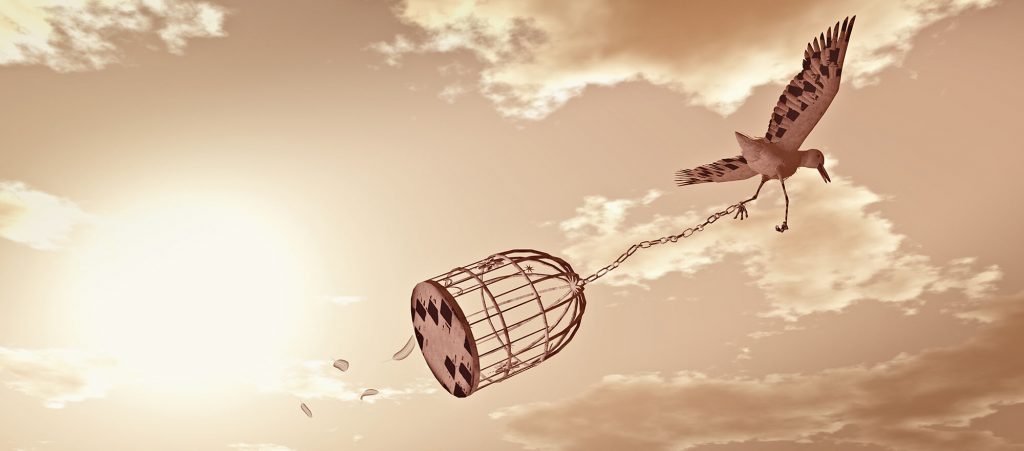
This can versus cannot paradox lies at the heart of the climate change debate. There’s also, admittedly, the notion that scientific results that we can’t easily observe with our five senses firsthand can be hard to take in. Most people can’t see electrons and protons, but they trust the results of physicists from generations before them.
The weather, on the other hand, is something people can observe. And everyone has an opinion on the weather. Inevitably, ideas of the weather are conflated with climate. For some reason it seems absurd to trust a scientist telling us about the long-term global climate future when a meteorologist can’t even predict the next day’s weather. Observability and comparability to experience certainly plays a role in the climate change debate.
When else has scientific discovery been met with such scrutiny and skepticism? The best example I can think of is the tobacco industry’s campaign against the cigarette-lung cancer link. Smoking (or not) was a choice that arguably affected individuals rather than entire countries, and it took twelve years (between 1954 and 1966) between the first scientific discovery, and governmental intervention in the form of warnings on cigarette packs. Nevertheless, the pernicious effects of that campaign are still felt today. I’ve met people who don’t believe in the harmful effects of cigarettes, and who swear based on a single outlier of an uncle who smoked every day and lived to 85 that the rest of the statistical results can be discarded.
This all-or-nothing thinking, or certainty-or-nothing thinking, is willfully encouraged when science gives us a result that threatens our existence. Objectivity is thrown out when it inconveniences us. So-called enabling science is welcomed, and restrictive science is spurned.
As a thought experiment, let’s flip climate change on its head. Let’s suppose that climate change scientists were telling us that as a result of anthropogenically-produced CO2, the climate has and would become more stable, that more people would live in favourable conditions on Earth. Would we have a debate? Would we question scientists and their results more than had ever been done in the last century? Even the naysayers would eventually have to acknowledge the evidence borne out by reams and reams of data around them, wouldn’t they? In this case, oil corporations would benefit from this news, so the widespread narrative would be more or less aligned. The alignment of realities is one effect, but there’s also the effect that this news, as an expander of freedoms, would be met with open arms.
Regardless of what your own stance on climate change is, I think an important act of self-awareness to take when you’re having any gut reaction to something climate-related is to examine where that reaction stems from. Does it come from a fear of death? Is it a fear of limiting your freedoms? By labelling an emotion, we empower the use of our entire brain’s circuitry to think through things more clearly and fully. Rather than staying rooted in lower-level reactional habits, this act of labeling an emotion to engage our whole brain can help us better understand ourselves and each other.
If we can acknowledge the fearful roots of our beliefs and reactions, we can examine them for what they are. If we value freedom so much that we treat any threat to limit it with outright hostility, then we ought to engage our whole brains in the examination of our fears, and beliefs, to truly express that freedom we hold so dear.
I have some incredibly exciting news, which I’ve been meaning to share amidst the crazy busy summer times.
First of all, “Ad Me,” a flash story about a magical homework assignment gone awry, was published in the Centropic Oracle podcast. It’s a short but adorable listen, so check it out in the sidebar.
Secondly, my short story, “The Djinni and the Accountant,” published in Fire: Demons, Dragons, and Djinn by Tyche Books, is a finalist for the Washington Science Fiction Associations Small Press Award!
You might notice that it’s published under a different name. That’s my old pen name, but it is indeed me. It’s funny how this stuff happens almost immediately after making a branding change, but that doesn’t detract much from my delight.
I have to give a huge thanks to Rhonda Parrish, who edited the anthology (and always does terrific work), as well as Tyche Books for publishing the elemental anthology series. I’m very flattered and honoured to be recognized as a finalist. It can seem sometimes like I’m not making progress, or that I’m banging my head against the same wall, but moments like these are wonderful breaths of air to say that yes, the hard work is paying off.
The finalists will be honoured, and the award given out on Saturday, October 19th, at the annual WSFA convention, Capclave (http://www.capclave.org). I will unfortunately be unable to attend, but I’ll be paying close attention for the final results, and will share as soon as I know.
If you happen to be attending, send me a message and let me know how the con goes!
I love board games, and so I feel an unnerving pressure to attend local events. A good kind of pressure, a deep-tissue massage.
We only went for the last afternoon, but we experienced what happens every time I crack open a new board game: new paradigms, new lenses through which we see microcosms before total immersion. I lose myself in these worlds, loving the way mechanics can be reflective of our own rules, things we might strive toward, or just ways in which we can be something more than ourselves.
The best game we played this year was Naga Raja, a two-player duelling treasure hunt game that entwines betting, combat, Indian Jones exploration and the satisfaction of pipeworks grid puzzles. The game had the wonderful combination of multiple interacting elements and mechanics, while remaining easy enough to understand the basic structure and flow. I regret to inform you I didn’t win the match, nor did I win the raffled copy of the game. Somehow, however, I feel that a serpentine ruler will slither its way into my game cupboard nevertheless…
Another game by the same company (Ilo 307) was Planet, where you build a planet by attaching magnetic tiles to your very own dodecahedron. Animals will spontaneously emerge, or perhaps flock to, the planet most abundant in a particular type of biome. While the mechanics were simple, the three-dimensional tactile aspect retained interest as we flipped our own, and each other’s planets to try and plan the next moves. Trying to keep a mental model throughout proved a form of calisthenics for spatial reasoning.
Tiny Towns was an adorable game that showed how resource acquisition can be a double-edged sword, discouraging wanton hoarding or collecting of anything but what you need, a notion and theme that is perhaps an appropriate lesson for the young and old.
Then there was Tokyo Highway. Oh, Tokyo Highway. What I’d like to call String Railroad 3D. What a neat concept, but wow, do I wish I had surgeon’s hands to be successful. In a two-player version, I managed to demolish highways faster than a sharknado. I can only imagine the rich satisfaction a 4-player game would entail, which would no doubt harbour toddler-level joy through ruination of an established order.
Thank goodness we have such outlets as games, or who knows what the babbling, insufferably adorable destructoids might do to the world as we know it.
Pretty excited to share that you can get F is for Fairy now as part of a Story Bundle (like Humble Bundle for books). That means you get to pay what you want for a variety of fairy-themed e-books, choosing what portion of it goes to a charity (like Girls Write Now or Mighty Writers) and to writers. This is a great opportunity to snag some good reading, support some great organizations, and support authors. Sandra Kasturi has curated this lovely collection.
This is happening before the book is officially released in May, so you can get it early. Click here to go to story bundle and get your books!
The F is for Fairy anthology, edited by Rhonda Parrish, is a collection of 26 short stories themed around fairies. There’s a story for each letter of the alphabet, and my story is the letter “I”. You’ll have to read the story to find out what the letter stands for….
